In this guide, let us take a closer look at Solar Panels and understand How to Install Solar Panels, what are the different mounting styles, and many more. NOTE: This article in not a user guide on Installation of Solar Panels but a simple technical discussion. While you can install your own Solar Panel, we suggest you to contact a “Solar” professional as they have the necessary knowledge, training and tools for installing Solar panels. Outline Solar Energy: Advantages and DisadvantagesAdvantagesDisadvantagesTypes of Solar InstallationTypical Solar Installation StepsInstallation of Solar PanelsConclusion: Solar Energy: Advantages and Disadvantages While the conventional (non-renewable) fuels such as coal, diesel, and petrol are still the dominating and main sources of energy, alternative energy sources such as Solar, Wind and Bio-energy, which are renewable, are slowly marking their territory. Of all the available renewable energy sources, Solar is abundant, easy to implement and install and is essentially free (once you recoup the initial investment). As a result, Solar Energy Systems are one of the top choices for alternative energy and are becoming increasingly popular. The process of converting light to electricity is known as Photovoltaic Effect. Photovoltaic Modules or Solar Cells are made from Silicon, a semiconducting material that is responsible for flow of electrons when Sunlight is incident on it. Solar Panels produce Direct Current or DC. Also, the voltage of output fluctuates slightly depending on the intensity of the Sunlight. Hence, apart from the Solar Panels, we need additional components such as a controller that properly regulates the output voltage and an inverter to covert the DC to AC (as most household appliances run on AC Power). Here are some of the advantages and disadvantages of Solar Energy System. Advantages Doesn’t need any fuel (except Sun light) and doesn’t burn any fossil fuels. Hence, almost nil Carbon emissions and pollution. Solar Panels have a very long working life (25 years or more) with minimum maintenance. Residential Solar Energy Systems can generate anywhere from few hundreds of watts to few thousands of watts. Since the source of generation of power and consumption are in a very close vicinity, there are no transmission losses. But there will be some losses while converting the DC to AC. Solar energy systems can operate independent to existing power grids. But there is an option to tie in to the grid or operate as a completely off-grid system. You can easily expand the capacity of the system in the future Perfectly suitable for remote locations or hill areas where it might be difficult to get grid power. Disadvantages The main disadvantage is its high initial cost. Depending on the size and capacity of your Solar installation, it will take few years to get back the investment. Several factors affect the output of a Solar Energy System such as the location of your home, climatic conditions, latitude, longitude, bird droppings and many more. While grid-tie systems are relative cheap and doesn’t require any batteries, you need to invest in batteries if you plan an off-grid system. Types of Solar Installation There are essentially three types of Solar Energy System Installations. They are: Grid-Tied System Off-Grid System Grid-Tied System with Battery Backup The Grid-Tied Solar System is a simple and affordable Photovoltaic System. There is no backup or battery in this system as the PV System connected to your existing grid supply. If your Solar Energy production is more than what you need, the controller (or a similar intelligent device) feed the excess power to the grid system and you get credits. But during night time when the solar generation is minimal, the system automatically pulls the necessary power from the grid. An Off-grid PV System, as the name suggests, is a completely independent and isolated system that has to tie ins to the grid. This setup is the most expensive as you need a battery bank to store the energy and use it when required. It is suitable for motor homes and remote location installations. The last popular type is a combination of the above two where you get the benefit of battery back up and also a tie in to the grid. You can charge the batteries during day time and if there is an excess power, then the system will feed it back to the grid. When the Solar generation is low or the battery pack is running low on juice, then you can draw the necessary power from the grid. Typical Solar Installation Steps Here are the typical steps involved in the installation of Solar Panels. Calculate the energy requirements and also figure out the budget. After assessing the solar generation needs, identify the right area for installation of the panels and properly calculate the area. Make an initial system plan and design the solar system by choosing the right set of components. Different states have different laws regarding Solar installation. You need to coordinate with your local officials, your utility company and/or your community or home owner’s association for proper approvals. Once the paper is finalized, you can start purchasing the necessary components, hardware (electrical and mechanical) either from a local store or online. After buying all the hardware, it is now time to install the panels. First, decide on the type of PV Mounting (Roof Mount or Ground Mount) and start the mechanical installation with the support structures. Then install the Solar Panels and start the electrical installation (conduits, wiring, connection to controller, meter, etc.). Schedule an inspection and if everything goes well obtain the necessary permission to run your system. Installation of Solar Panels In order to successfully install and operate your Solar Panels, you need a proper mounting system to firmly hold the panels and also correct wiring. So, the first step is to determine which mounting system to choose. You need to make necessary calculations to determine the ideal position of the panels so that the panels receive maximum Sun light. Once the orientation and tilt angle are finalized, you need to make sure that there are shades from any nearby trees or buildings. Tip: For countries in the northern hemisphere, the ideal way to mount Solar panels is by facing them South. It is North for countries in the southern hemisphere. The tilt angle depends on the latitude and longitude. Another important thing to consider is whether you opt for a roof installation or ground installation. In case of roof installation, there are again two considerations: a Flat Roof or a Slanting Roof. The mounting mechanism for both these types vary. Coming to ground mounting, again you can consider a bracket mount or a pole mount. One you finalize the type of mount; you can now start with installing the necessary support structures for the panels. Once the support structure is properly mounted, you can start installing the solar panels. This involves correctly placing the solar panels on the support structure and properly securing them using nuts and bolts. After the mechanical installation of Solar Panels is done, we can now move to the electrical part. Properly terminate all the cables with necessary tools and make the connection as per pre-planned circuit. Once all the basic wiring of the Solar panels is done, now is the time to connect the panels to a Solar Inverter and/or Controller. If you are designing an off-grid system or grid-tied system with backup, then you need to build a battery pack depending on your energy/backup requirements. Once the battery pack is ready, connect the solar controller to the battery and the batteries to the inverter. For grid-tied systems (with or without backup), you need additional components such as a utility meter and a disconnect switch. Once you connect all the necessary modules and components, test the system, schedule an inspection and start using your Solar Energy System. Conclusion: A simple guide on installation of Solar Panels. Residential Solar Energy Systems are becoming extremely popular and with proper planning you can easily install the solar panels. Before installing solar panels, you need to decide on some important parameters such as the aim of your Solar Energy Generation, Budget, type of installation (grid-tied, off-grid or grid-tied with backup), mounting style (roof or ground) and many more. Once everything is worked out, then the installation of solar panel becomes very easy. Related Posts:Do Solar Lights Require Direct Sunlight?Do Solar Panels Store EnergySolar Panel Sizes and Weights - Complete GuideHow Many Solar Panels Do I NeedSolar Panels Angle - How Do you Find it?Afraid Your Solar Panel Roof Might Leak? Read On To Know… Of all the available renewable energy sources, Solar is abundant, easy to implement and install and is essentially free (once you recoup the initial investment). As a result, Solar Energy Systems are one of the top choices for alternative energy and are becoming increasingly popular. The process of converting light to electricity is known as Photovoltaic Effect. Photovoltaic Modules or Solar Cells are made from Silicon, a semiconducting material that is responsible for flow of electrons when Sunlight is incident on it. Solar Panels produce Direct Current or DC. Also, the voltage of output fluctuates slightly depending on the intensity of the Sunlight. Hence, apart from the Solar Panels, we need additional components such as a controller that properly regulates the output voltage and an inverter to covert the DC to AC (as most household appliances run on AC Power). Here are some of the advantages and disadvantages of Solar Energy System.
Advantages
Doesn’t need any fuel (except Sun light) and doesn’t burn any fossil fuels. Hence, almost nil Carbon emissions and pollution. Solar Panels have a very long working life (25 years or more) with minimum maintenance. Residential Solar Energy Systems can generate anywhere from few hundreds of watts to few thousands of watts. Since the source of generation of power and consumption are in a very close vicinity, there are no transmission losses. But there will be some losses while converting the DC to AC. Solar energy systems can operate independent to existing power grids. But there is an option to tie in to the grid or operate as a completely off-grid system. You can easily expand the capacity of the system in the future Perfectly suitable for remote locations or hill areas where it might be difficult to get grid power.
Disadvantages
The main disadvantage is its high initial cost. Depending on the size and capacity of your Solar installation, it will take few years to get back the investment. Several factors affect the output of a Solar Energy System such as the location of your home, climatic conditions, latitude, longitude, bird droppings and many more. While grid-tie systems are relative cheap and doesn’t require any batteries, you need to invest in batteries if you plan an off-grid system.
Types of Solar Installation
There are essentially three types of Solar Energy System Installations. They are:
Grid-Tied System Off-Grid System Grid-Tied System with Battery Backup
The Grid-Tied Solar System is a simple and affordable Photovoltaic System. There is no backup or battery in this system as the PV System connected to your existing grid supply. If your Solar Energy production is more than what you need, the controller (or a similar intelligent device) feed the excess power to the grid system and you get credits. But during night time when the solar generation is minimal, the system automatically pulls the necessary power from the grid. An Off-grid PV System, as the name suggests, is a completely independent and isolated system that has to tie ins to the grid. This setup is the most expensive as you need a battery bank to store the energy and use it when required. It is suitable for motor homes and remote location installations. The last popular type is a combination of the above two where you get the benefit of battery back up and also a tie in to the grid. You can charge the batteries during day time and if there is an excess power, then the system will feed it back to the grid. When the Solar generation is low or the battery pack is running low on juice, then you can draw the necessary power from the grid.
Typical Solar Installation Steps
Here are the typical steps involved in the installation of Solar Panels.
Calculate the energy requirements and also figure out the budget. After assessing the solar generation needs, identify the right area for installation of the panels and properly calculate the area. Make an initial system plan and design the solar system by choosing the right set of components. Different states have different laws regarding Solar installation. You need to coordinate with your local officials, your utility company and/or your community or home owner’s association for proper approvals. Once the paper is finalized, you can start purchasing the necessary components, hardware (electrical and mechanical) either from a local store or online. After buying all the hardware, it is now time to install the panels. First, decide on the type of PV Mounting (Roof Mount or Ground Mount) and start the mechanical installation with the support structures. Then install the Solar Panels and start the electrical installation (conduits, wiring, connection to controller, meter, etc.). Schedule an inspection and if everything goes well obtain the necessary permission to run your system.
Installation of Solar Panels
In order to successfully install and operate your Solar Panels, you need a proper mounting system to firmly hold the panels and also correct wiring. So, the first step is to determine which mounting system to choose. You need to make necessary calculations to determine the ideal position of the panels so that the panels receive maximum Sun light. Once the orientation and tilt angle are finalized, you need to make sure that there are shades from any nearby trees or buildings. Tip: For countries in the northern hemisphere, the ideal way to mount Solar panels is by facing them South. It is North for countries in the southern hemisphere. The tilt angle depends on the latitude and longitude. Another important thing to consider is whether you opt for a roof installation or ground installation. In case of roof installation, there are again two considerations: a Flat Roof or a Slanting Roof. The mounting mechanism for both these types vary. Coming to ground mounting, again you can consider a bracket mount or a pole mount. One you finalize the type of mount; you can now start with installing the necessary support structures for the panels. Once the support structure is properly mounted, you can start installing the solar panels. This involves correctly placing the solar panels on the support structure and properly securing them using nuts and bolts. After the mechanical installation of Solar Panels is done, we can now move to the electrical part. Properly terminate all the cables with necessary tools and make the connection as per pre-planned circuit. Once all the basic wiring of the Solar panels is done, now is the time to connect the panels to a Solar Inverter and/or Controller. If you are designing an off-grid system or grid-tied system with backup, then you need to build a battery pack depending on your energy/backup requirements. Once the battery pack is ready, connect the solar controller to the battery and the batteries to the inverter. For grid-tied systems (with or without backup), you need additional components such as a utility meter and a disconnect switch. Once you connect all the necessary modules and components, test the system, schedule an inspection and start using your Solar Energy System.
Conclusion:
A simple guide on installation of Solar Panels. Residential Solar Energy Systems are becoming extremely popular and with proper planning you can easily install the solar panels. Before installing solar panels, you need to decide on some important parameters such as the aim of your Solar Energy Generation, Budget, type of installation (grid-tied, off-grid or grid-tied with backup), mounting style (roof or ground) and many more. Once everything is worked out, then the installation of solar panel becomes very easy. Comment * Name * Email * Website
Δ



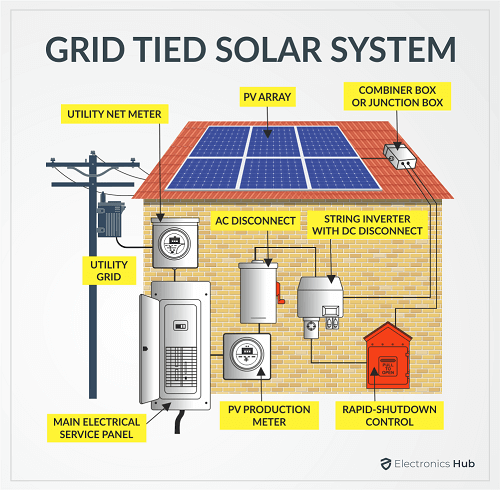
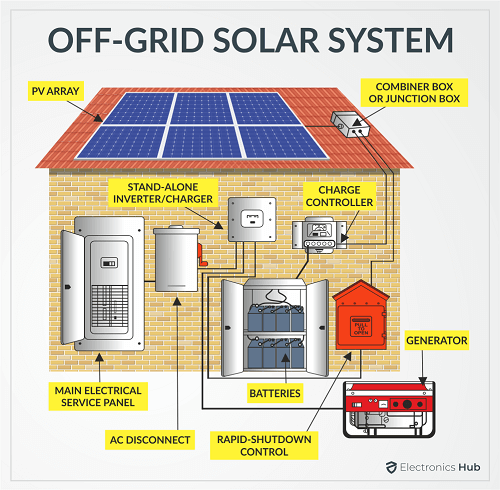
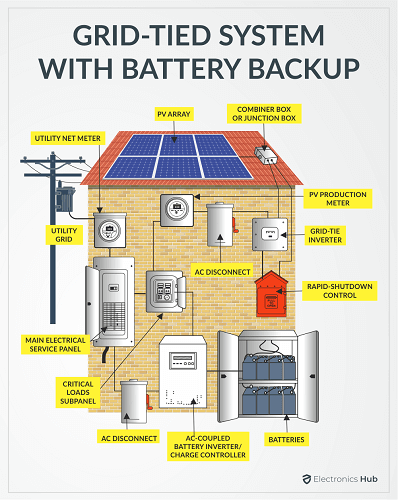
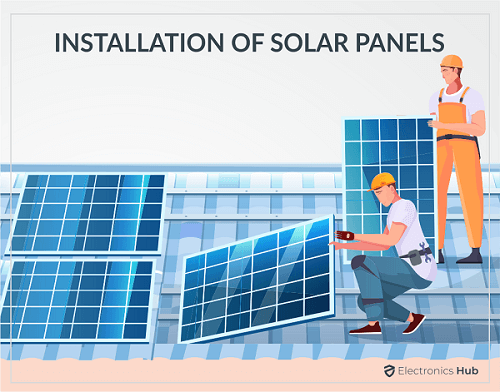
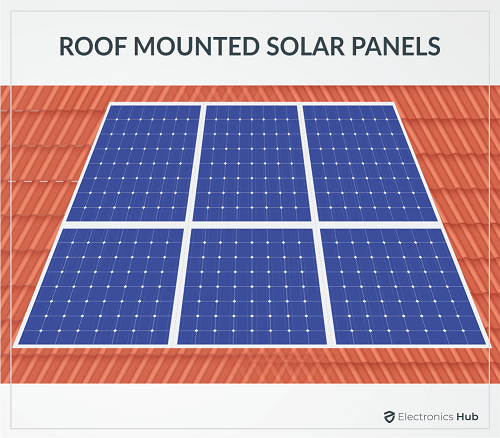
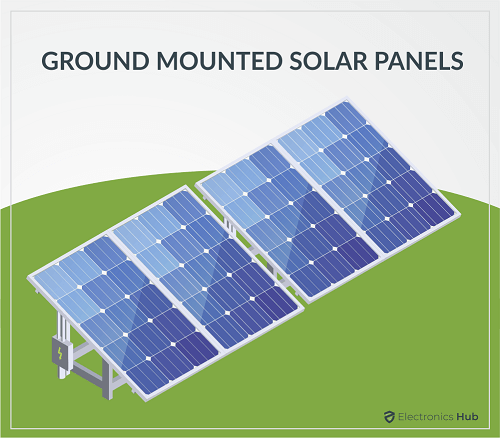
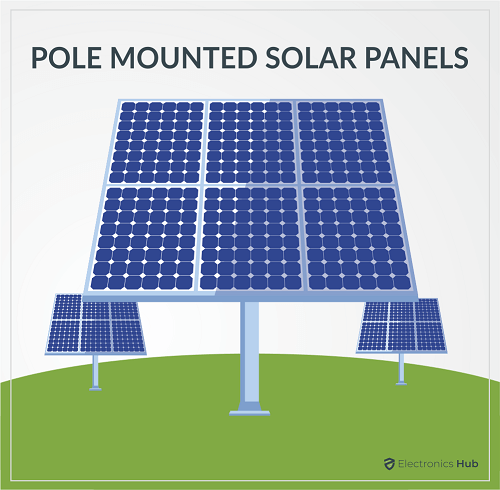


![]()